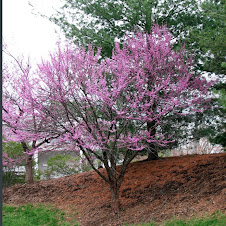I spend a lot of my autumn garden days in dreaming and observing what is around me than I do gardening. One of my favorite pursuits is to watch wooly worms - wooly bears, black-ended bears, banded woolly bears - inch their way about the garden landscape.
Folklore has it that these critters can predict the coming winter weather. And here is how we are suppose to forecast the coming months. Look for those woolly bears that are black at each end with a reddish brown band in the middle. The size of the brown band is suppose to be an indicator of winter's severity - the narrower the band, the harsher the winter. If woolly worms are browner than black, and the middle band tends toward orange that indicates the winter will be mild.
The woolly worm is really the (caterpillar) larval stage of the
We can still enjoy these critters despite their scientific rap. The folks in Lewisburg, PA and elsewhere annually celebrate at the woolly worm. This year, the Woolly Worm Festival in Lewisburg is on Saturday, October 13 from
You can also read more about Wooly Bears, their reputations and celebratory activities at All About Worms: Articles About Woolly Bears.
Happy Autumn and Happy Daydreaming!



No comments:
Post a Comment